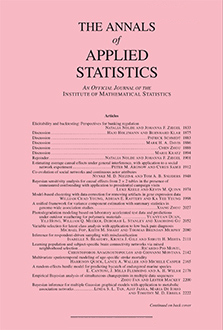Abstract
Ratings of teachers’ instructional practices using standardized classroom observation instruments are increasingly being used for both research and teacher accountability. There are multiple instruments in use, each attempting to evaluate many dimensions of teaching and classroom activities, and little is known about what underlying teaching quality attributes are being measured. We use data from multiple instruments collected from 458 middle school mathematics and English language arts teachers to inform research and practice on teacher performance measurement by modeling latent constructs of high-quality teaching. We make inferences about these constructs using a novel approach to Bayesian exploratory factor analysis (EFA) that, unlike commonly used approaches for identifying factor loadings in Bayesian EFA, is invariant to how the data dimensions are ordered. Applying this approach to ratings of lessons reveals two distinct teaching constructs in both mathematics and English language arts: (1) quality of instructional practices; and (2) quality of teacher management of classrooms. We demonstrate the relationships of these constructs to other indicators of teaching quality, including teacher content knowledge and student performance on standardized tests.
Citation
J. R. Lockwood. Terrance D. Savitsky. Daniel F. McCaffrey. "Inferring constructs of effective teaching from classroom observations: An application of Bayesian exploratory factor analysis without restrictions." Ann. Appl. Stat. 9 (3) 1484 - 1509, September 2015. https://doi.org/10.1214/15-AOAS833
Information





